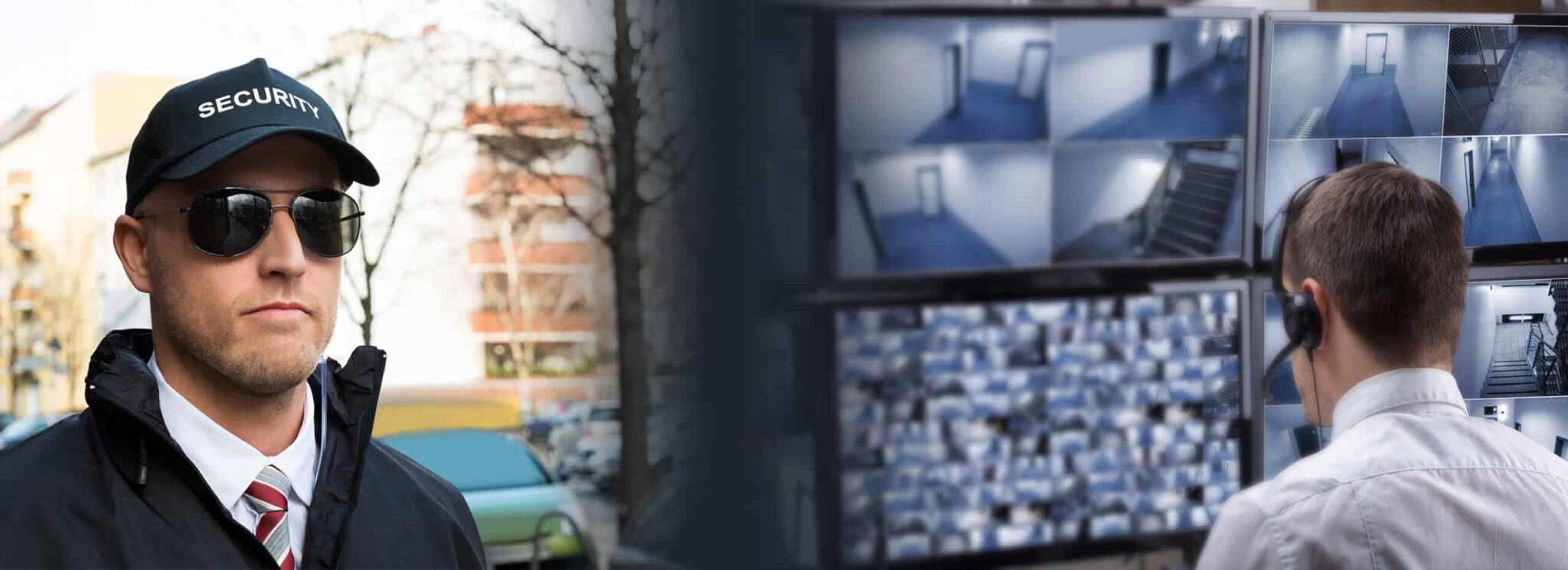Would it surprise you that security guards outnumber sworn, trained law enforcement officers? National Law Enforcement Memorial Fund says more than 900,000 people work as a law enforcement officer in the U.S. There are more than one million security guards employed in the U.S. per the Bureau of Labor Statistics.
What Does It Take to Become a Security Guard?
It’s far easier to become a security guard than a police officer. For instance, in Texas, the Plano Police Department hiring process requires a lot before they make a conditional job offer. Once candidates receive an offer, they must still undergo a psych evaluation and medical exam before the final review and approval.
Texas Commission on Law Enforcement (TCOLE) sets the state’s minimum requirements for becoming a police officer in Texas. TCOLE requires Texas police academies to provide more than 618 hours of instruction. Most training academies offer more than 1,000 hours of instruction.
Yet, when you look at job postings for security guards in Texas, qualification requirements range from a high school diploma to a security guard license. Texas Department of Public Safety Private Security Level III only requires 45 hours of training. This pales in comparison to what police officers get.
Nonetheless, many companies hire security guards to keep everyone safe. They also depend on them to help prevent theft, vandalism, and property damage. However, is it the most cost-effective security solution today with all the technology advances in recent years?
How Live Video Monitoring Became a Viable Security Option
Video surveillance has come a long way from the days of grainy video where you couldn’t make out faces. Not only did video quality need to improve, but also the ability to store the video. That alone took up a lot of space. A videotape could once only hold eight hours’ worth of video. Someone had to remember to change out the tapes every eight hours.
Once the quality and storage situations improved, the next problem video surveillance needed to fix was the inability to see at night. Thermal imaging solved that. Next, some large properties struggled to identify faces and license plate information from far away. Long-range surveillance and license plate recognition technology solved those problems.
Now smart cameras offer internal storage, embedded analytics, and mobile access. Video monitoring continues to evolve and become essential for companies that need to keep an eye on their assets.
Like all technology, the cost of video surveillance keeps dropping and delivering greater cost savings. Now, it’s a viable option for construction worksites, apartment buildings, retail centers, industrial buildings, and cannabis businesses.
The cost has reached a point that it delivers a faster return on investment than using security guards. Video can do two things security guards cannot: retain footage of activity and see the entire property.
Should a company invest in security guards and video? Just security guards? Video? The business or property owner or manager needs to look at their needs to determine the ideal security solution.
Security Guards Vs. Live Video Monitoring
The advantage of having security guards onsite may sound like a no brainer, but it is not. Before investigating the two options, the first thing to do is to conduct a risk assessment. This involves analyzing the property, identifying potential problems and threats, and capturing any security solutions you have in place such as lighting and landscape maintenance.
In comparing the two, you’ll want to consider the following six factors.
1. Response times
A trained operator watching the cameras is not going to be onsite. Instead, they look for potential problems and call the police when the situation warrants it. An on-site security guard can obviously get to problem area much faster than a video operator calling the police and waiting for them to arrive.
However, security guards may not be aware of a potential problem. It could take place on the other side of the property. One way to speed response is to implement a hybrid solution that combines an on-site security guard with video surveillance. The trained operator can alert the security guard to a problem.
If you can’t use both, other factors will indicate which option is the better of the two that delivers a faster ROI.
2. Possibility of human error
If you need to pick one or the other, your decision depends on a few things. For one, you do not know how the security guard will respond, especially when it’s a life-threatening or unknown situation. Human’s fight or flight instinct can determine how the security guard will react and they could end up fleeing.
Furthermore, security guards can be liable for causing injury or not taking the appropriate action. The Dallas Morning News tells the story of a retail store where police officers’ families plan to sue the company providing the security guards.
When the police officers arrived at the retail center, they thought the guards searched the suspect for weapons. It’s standard practice for guards to call the police after disarming and searching the suspect.
However, the guard didn’t do a thorough job searching the suspect. Initially, the guard found a can of mace but completely missed a gun. That gun ended up killing one officer and injuring another. This isn’t an isolated incident.
Here are more stories involving security guards:
- Licensed security guard in Nevada shoots an employee.
- Security guards in Montreal may be held responsible for causing $1.5M in damage
- Miami security guard tackles a teen who doesn’t have stolen merchandise.
Many more stories like these make the headlines. In short, security guards do not have the knowledge and skills required of police officers. Although they need a license to carry a gun, they do not necessarily know how to use it in a dangerous, spontaneous situation.
Human error can turn out to be an expensive liability for companies employing or contracting security guard services.
3. Costs
While the presence of a security guard can deter crime, the cost is not feasible for many businesses. One guard is typically not enough for optimal security especially if you need around-the-clock security.
Any time you need around-the-clock security will require at least two guards, most likely three or more. The cost multiplies exponentially with each guard you hire. You’re not only paying their salary, but also their benefits.
A security guard earns anywhere between $10 and $24. The salary often depends on their training, experience, and licensing. Those paid less have the least experience and training and probably cannot carry a weapon. Another factor affecting salaries is the shift assignment. The night shift often gets higher pay because of the increased risk.
In one case of a retail center, they had on-site security guards 24/7 and it cost $14,000 a month or $168,000 a year. This proved too expensive for the company, so they contacted our team to explore another security option. The retail center client paid $2,000 a month for monitoring and $35,000 for equipment.
The setup and ongoing video monitoring cost $8,000 less than 24/7 security guard services in a four-month period. One year of live video monitoring plus equipment cost $64,000, almost 60 percent less than the security guard.
4. Property coverage
Most properties contain a lot of ground when you add up the square footage for every floor, parking lot, garage, roof access, and behind the building. That’s a large area for a security guard to watch. It can easily take an hour to survey the entire property.
Video surveillance constantly watches your entire property. Criminals won’t be able to escape the cameras. They can, however, survey the patrols and go in when they know the guards are elsewhere.
5. Equipment malfunction
Remote video monitoring has one potential disadvantage and that’s equipment malfunction. If it does not operate, then it’s not protecting your property. As you investigate the right security for your business, ask vendors about power outages and faulty equipment.
An experienced vendor has backup processes in place to help prevent this from happening or switch over to another system. That’s why it’s critical to make sure the vendor you select has system health check services. It’s a proactive way to ensure the system works properly and maximizes performance and uptime.
6. Recording incidences
One thing a guard cannot do that a camera is to capture everything for later review and analysis. Should something happen, analysts can review the footage to find proof of what transpired. This can help prevent and eliminate lawsuits related to liability and fraud.
Making the Right Choice
Video monitoring services and security guards come with pros and cons. One option is to get the best of both worlds with a hybrid solution. However, it may be cost prohibitive.
All things being equal, video surveillance tends to provide the best return on investment and the highest levels of security. That is because the monthly costs are lower than hiring a security guard. The cost of the equipment pays off within a few months.
Equally important is where you place the cameras. Some vendors may attempt to install many cameras across the property, driving up the cost. The more cameras you have, the higher the costs.
Interview multiple vendors to find out what they recommend in terms of the number of cameras and their placement. The right vendor will find a way to strategically place cameras to get the greatest amount of views with the fewest cameras possible.
Stealth offers full-service video monitoring solutions, everything from designing and implementing a system to video analysis and system maintenance. We’ve worked with many industries and have the videos to show you our capabilities. To find out what kind of solution would work for your business, please contact us.

